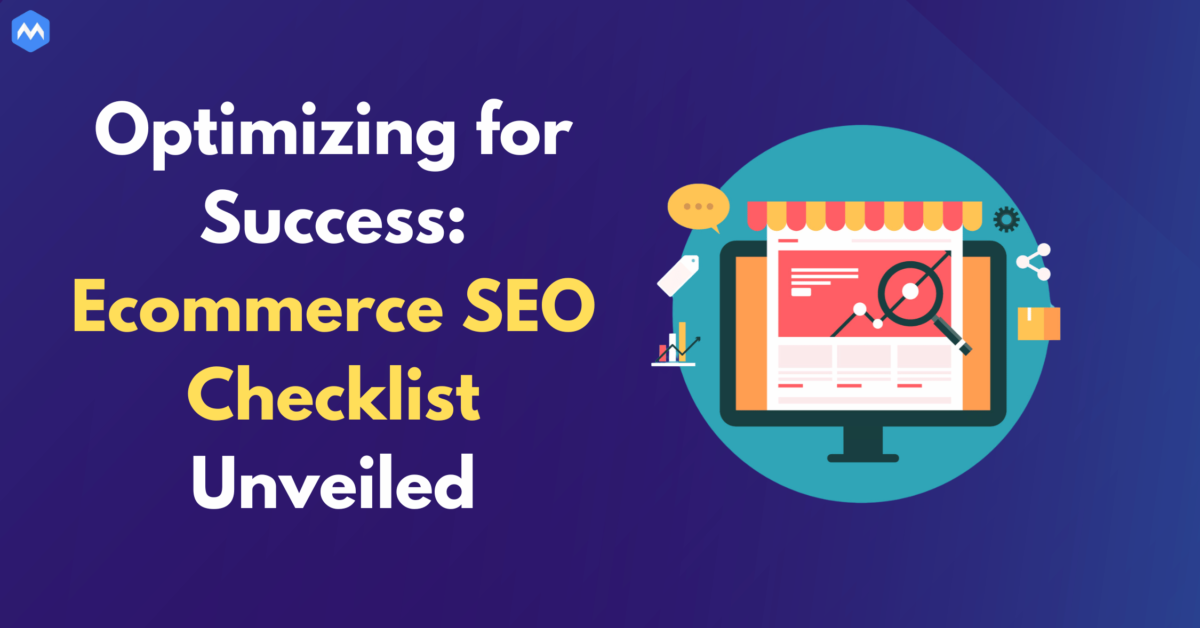Optimizing for Success: Ecommerce SEO Checklist Unveiled
In the fiercely competitive world of ecommerce, search engine optimization (SEO) plays a pivotal role in driving organic traffic and ensuring the visibility of your online store. A well-optimized ecommerce website not only attracts potential customers but also enhances user experience, ultimately leading to higher conversion rates. To help you navigate the intricate landscape of ecommerce SEO, we’ve compiled a detailed ecommerce SEO checklist covering key aspects to focus on. Follow these steps to boost your online presence and outrank competitors.
Also See: Definitive Guide to E-commerce SEO
In this article, You will get a complete ecommerce SEO checklist to help you nail it for your store. So, without further ado, let’s go over the steps you can take today to improve your rankings!
Here’s our ecommerce SEO checklist:
Conduct Keyword Research
The Heart and soul of SEO is keyword research. Keywords are how search engines understand that a certain search result is discussing a specific topic. For example, when you type in a question on Google, the search engine will try to find the best result for your question.
Optimize Your On-Page SEO
Your pages should be user-friendly. Considering that over 80% of users skim-read content, you want to make their experience as easy as it can be. From your web page’s design to the quality of the content you upload, you should improve whatever you can on-page.
Adding your selected keyword to a page’s H1 heading should be your first move.
Next, include headings throughout the page. This will direct the reader’s eye, as well as allow you to drop in another keyword for Google to find.
Finally, set your font at 16px or more, don’t use crazy contrasting or bright colors, and make sure your text doesn’t overlap your images.
Optimize Your Product Images
Users frequently form their initial opinions of your products based on your product images. Therefore, you want to make sure they’re high quality and showcase your products from different angles.
Be sure to use the chosen keyword as your file name before you upload it to your site (e.g. 925 sterling silver hypoallergenic image). Similarly, when filling in the Alt Title (or Alt Text), you want to make sure to describe the image for visually impaired users while at the same time including some of your most important keywords.
Also Read: Image SEO: Optimizing Visual Content
Check for Duplicate Content
Duplicate content will kill your rankings. This is true for duplicate content copied from other websites, but also from your own. No page should have the same content as another. Even if your products are very similar, you need to make sure their descriptions are written differently, using different text.
Make sure to use a plagiarism detector to identify any possible problems with duplicate content if you have someone else write the copy or content for your blog. Also, if your website has too many pages, try to do some research and see if you find the same text in multiple spots. If you do, change it immediately.
Make sure Your Website is Mobile-Friendly
The number of people using their smartphones to browse the internet is growing every day. Mobile internet traffic corresponds to 56.89% of the total global online traffic, which is why Google prioritises the mobile version of your website over the desktop version.
Your rankings won’t significantly improve if your page isn’t designed with speed and ease of use in mind for mobile devices. Therefore, you must ensure you have all of your technical issues fixed (especially Core Web Vitals) for mobile.
One way to check for issues is by using the Google Search Console. It will tell you what errors you currently have on your website and send you updates via email if future problems are found.
Also Read: Mastering SEO Audits: A Comprehensive Guide for Success
Technical eCommerce SEO Checklist
Technical SEO for ecommerce focuses on making sure your website offers a great web experience for your users and search engines, i.e., the website is easily crawlable and comes with outstanding performance.
Crawling and indexing
Before you search, web crawlers gather information from hundreds of billions of web pages and organize it in the search index. Robots.txt and sitemap.xml can aid Google and other search engines in finding, crawling, and indexing your website more quickly.
Crawl Budget
A crawl budget helps you prioritize the crawling pages of your website.
Medium or larger websites (10,000+ unique pages) with daily changes or larger websites (1 million+ unique pages) with weekly changes should turn to this page for handling the crawling budget. The rest are good with autopilot.
Page Experience & Performance
The idea behind page experience signals is to use a website’s real user experience as a ranking or search engine. The majority of the time, it comes down to frontend performance optimization for your store, or working towards passing Core Web Vitals.
Web development nowadays is changing quickly. Though trends change, selecting a quick and efficient front-end framework for your tech stack is essential right now. For your project, if at all possible, use headless architecture (many advantages beyond performance). Even though we support headless, this does not mean you have to give up on your preferred platform.
Site Architecture
From the perspective of users and crawlers, your website’s organization matters.
- Whichever way you choose to build the website, make sure you have a logical site structure with distinct, well-organized, and accessible categories and subcategories.
- Make use of a flat structure so that visitors and search engine crawlers can quickly and easily navigate your website from the homepage.
- It shouldn’t take three clicks or more to reach any page from another page.
- Linkages to the subpages that are most pertinent to the content on your main pages should be made from your home page.
Group the pages by topic/keyword relevance.
Conclusion
Mastering ecommerce SEO requires a holistic approach that encompasses various elements. By diligently following this comprehensive checklist, you’ll be well on your way to optimizing your online store for search engines and providing an exceptional user experience. Remember that SEO is an ongoing process, so stay informed about industry trends and continuously refine your strategy to stay ahead in the competitive ecommerce landscape.
Metaloop Marketing offers the best ecommerce SEO Services in India. We are the agency that businesses trust, with over 20 years of experience, billions of dollars in client results, and exclusive access to one of the top AI and marketing automation software platforms in the business. We also have hundreds of happy clients.



Write a Comment